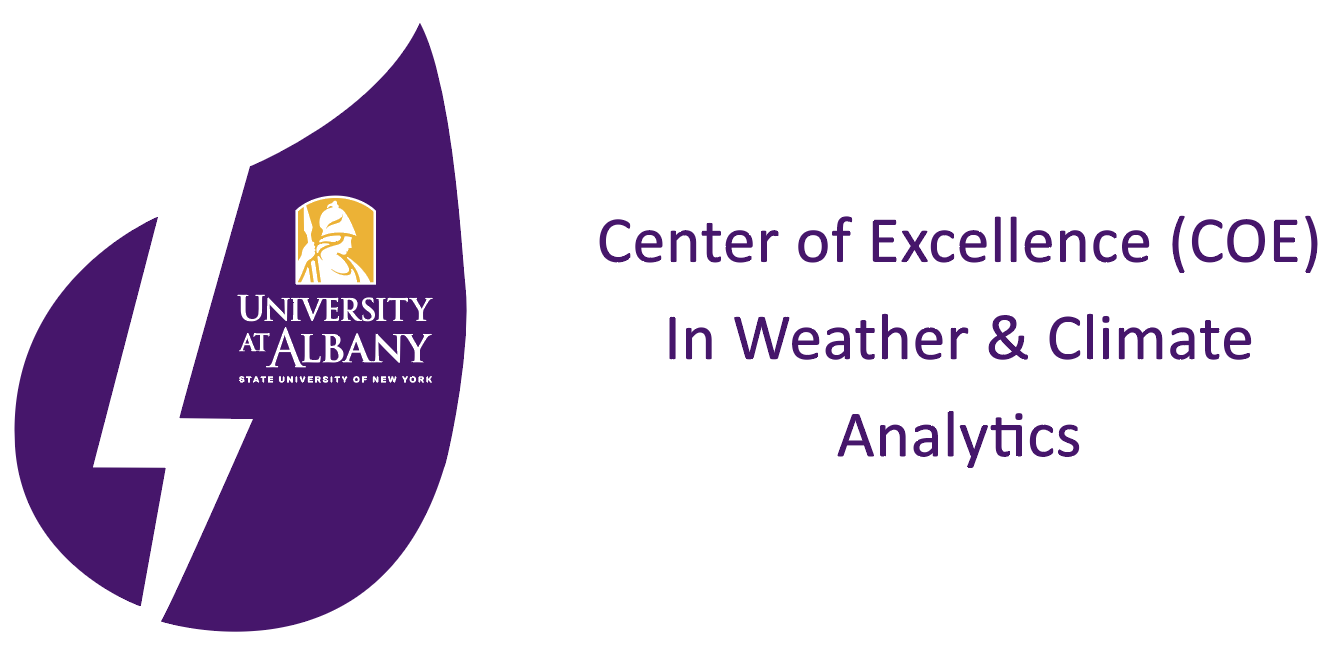UAlbany, Capital Region BOCES Partner on Extreme Weather Forecasting Tool
As school districts across New York prepare for winter, a partnership between UAlbany and Capital Region BOCES will offer them a new forecasting tool for advanced insight into potential impactful weather conditions.
The Center of Excellence in Weather & Climate Analytics has teamed up with Capital Region BOCES leadership to create an “extreme weather risk assessment dashboard.” Through the dashboard, partnering school districts, statewide, will be provided with localized weather data and forecasting predictions, updated in real-time.
“We’re thrilled to partner with UAlbany to offer a tool that will help BOCES’ and school district officials statewide more accurately evaluate the situation they are facing and make an informed decision to close or delay school,” said Capital Region BOCES Senior Executive Officer Joseph P. Dragone.
“UAlbany is proud to team up with Capital Region BOCES to offer school districts throughout the state with a first-in-the-nation weather forecast tool that can enhance their decision-making and mitigate the impacts of extreme weather,” said UAlbany Vice President for Research James Dias. “As a public research institution, this partnership is a great example of UAlbany’s continued commitment to finding meaningful solutions to today’s biggest challenges.”
The dashboard is currently in its pilot phase with six BOCES regions – the Capital Region, Oswego County, Sullivan County, Cayuga-Onondaga County, Monroe 1 and Monroe 2 – already signed on to use the tool. Several more BOCES regions are expected to offer the dashboard to their school districts within the next few months.
“Making weather-related decisions that will impact the safety of our students and staff depends on having quality, timely ‘hype-free’ information,” said Guilderland Central School District Superintendent Marie Wiles. “Piloting the weather forecasting tool in Guilderland means that we have had the opportunity to shape it into something that can help keep everyone safer in times of challenging weather conditions.”
UAlbany's COE and Capital Region BOCES celebrated the launch of their partnership during a press event Tuesday. From left: Christopher Thorncroft, Nick Bassill, NYS Assemblywoman Patricia Fahy, Joseph P. Dragone. (Photo by Brian Busher)
The extreme weather risk assessment dashboard relies on a combination of numerical weather prediction modeling and machine learning techniques to produce hour-by-hour forecasts for a number of different variables, including snowfall, freezing rain, sleet, heavy rain, wind gusts, heat index, and wind chill.
Forecasts are divided into hourly intervals and color-coded based on the likelihood of a prediction being met at that time. For example, a forecast that is colored red for 3-plus inches of snow between Noon and 1 p.m. has a high probability (greater than 50 percent) during that interval. If that same interval is colored blue instead, it has a low probability, or if blank, the risk is unlikely.
“With the winter weather looming and the lake effect creating localized weather conditions across the Rochester-Finger Lakes region, this is an essential tool to help school leaders make an educated decision about the school schedule,” said Monroe 1 Educational Services Superintendent Daniel White. “It’s also easy-to-use and access.”
The dashboard also provides current conditions in the region through the New York State Mesonet, a statewide network of 126 standard weather stations. Each NYS Mesonet station tracks approximately 20 weather variables and collects still camera photos to visualize conditions. Updates to the data are fed through the network’s operation center, located at UAlbany, every five minutes. There’s at least one station in all 62 counties, about 19 miles apart. Dashboards will be locally customized for partnering BOCES regions, with training and onboarding offered to superintendents before implementation.
“The Center of Excellence in Weather & Climate Analytics is UAlbany’s entrepreneurial hub for a network of over 120 weather and climate faculty, researchers and research staff,” said Christopher Thorncroft, interim director of the Atmospheric Sciences Research Center (ASRC) and director of the COE and NYS Mesonet. “By leveraging this expertise on our campus, and through our partnership with Capital Region BOCES, this dashboard is going to offer school districts with significant insight on local weather conditions that can help them determine appropriate action for school closings, delays and cancellations.”
“We’re passionate about helping New York solve weather problems at the COE, so I’m extremely excited to contribute to the safety of our schools during impactful weather,” added Nick Bassill, a COE/NYS Mesonet scientist who is leading the dashboard’s development. “This tool provides a common weather resource for decision-makers that’s straightforward and tailored to each district.”
UAlbany’s weather-climate enterprise hosts the largest concentration of atmospheric, climate and environmental scientists in New York State, and one of the largest in the nation. Once completed in 2021, the University’s $180 million ETEC building will co-locate some of its strongest research areas, including all atmospheric science programs, in a single facility on 12 acres of the Harriman State Office Campus.
Capital Region BOCES delivers programs and services to 24 component school districts in Albany, Schenectady, Schoharie and Southern Saratoga counties. They also provide services to more than 150 school districts outside the Capital Region.

